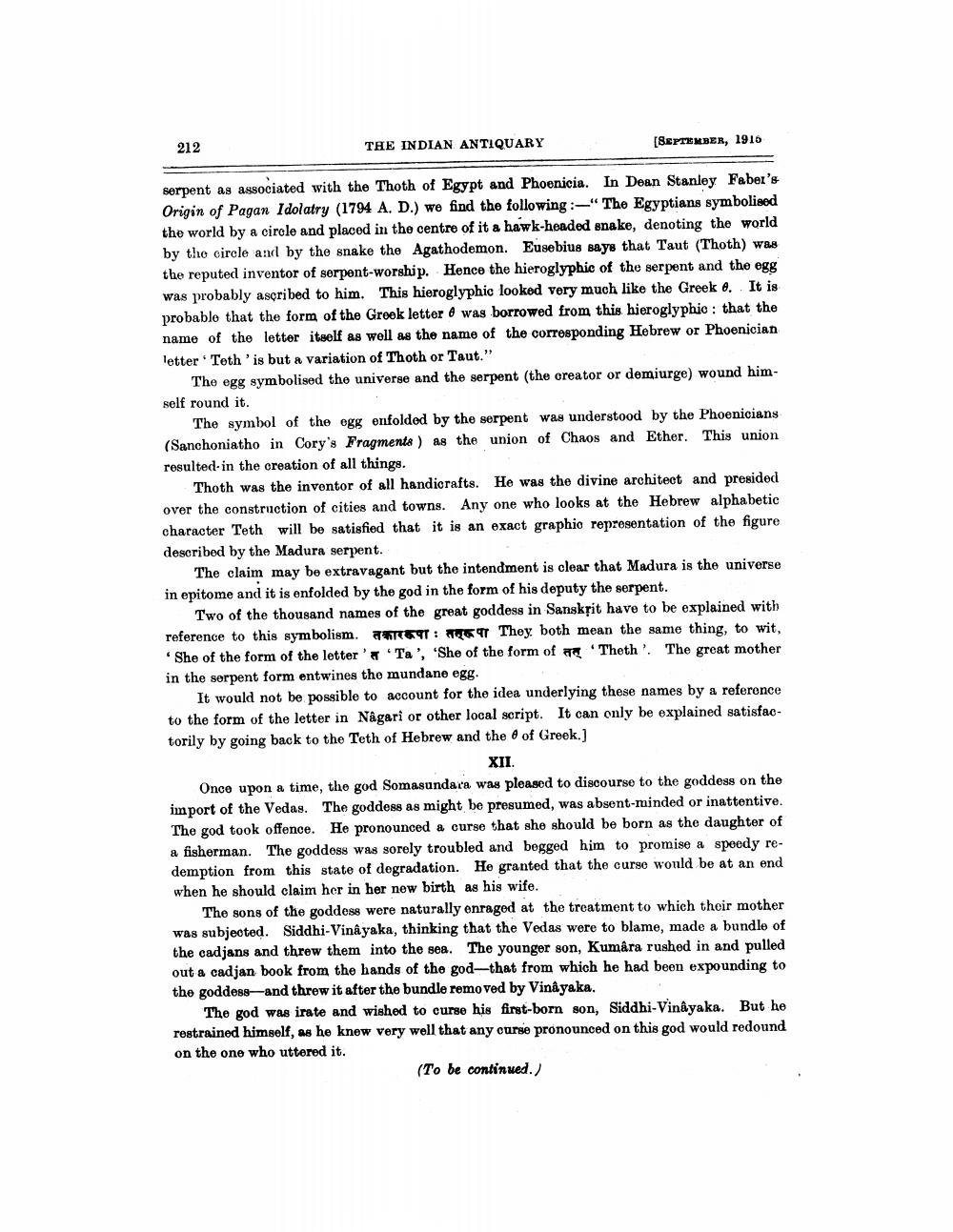________________
212
THE INDIAN ANTIQUARY
SEPTEMBER, 1915
serpent as associated with the Thoth of Egypt and Phoenicia. In Dean Stanley Faber's Origin of Pagan Idolatry (1794 A. D.) we find the following :-"The Egyptians symbolised the world by a circle and placed in the centre of it a hawk-headed snake, denoting the world by the circle and by the snake the Agathodemon. Eusebius says that Taut (Thoth) Was the reputed inventor of serpent-worship. Hence the hieroglyphic of the serpent and the egg was probably ascribed to him. This hieroglyphic looked very much like the Greek . It is probable that the form of the Groek letter 8 was borrowed from this hieroglyphic: that the name of the letter itself as well as the name of the corresponding Hebrew or Phoenician letter Teth 'is but a variation of Thoth or Taut."
The egg symbolised the universe and the serpent (the oreator or demiurge) wound himself round it.
The symbol of the egg enfolded by the serpent was understood by the Phoenicians (Sanchoniatho in Cory's Fragments ) as the union of Chaos and Ether. This union resulted in the creation of all things.
Thoth was the inventor of all handicrafts. He was the divine architect and presided over the construction of cities and towns. Any one who looks at the Hebrew alphabetic character Teth will be satisfied that it is an exact graphic representation of the figure described by the Madura serpent.
The claim may be extravagant but the intendment is clear that Madura is the universe in epitome and it is enfolded by the god in the form of his deputy the serpent.
Two of the thousand names of the great goddess in Sanskrit have to be explained with reference to this symbolism. RET: NET They both mean the same thing, to wit,
She of the form of the letter' Ta', 'She of the form of a Theth'. The great mother in the serpent form entwines tho mundane egg.
It would not be possible to account for the idea underlying these names by a reference to the form of the letter in Någari or other local script. It can only be explained satisfactorily by going back to the Teth of Hebrew and the 8 of Greek.]
XII. Once upon a time, the god Somasundara was pleased to discourse to the goddess on the import of the Vedas. The goddess as might be presumed, was absent-minded or inattentive. The god took offence. He pronounced a curse that she should be born as the daughter of a fisherman. The goddess was sorely troubled and begged him to promise a speedy redemption from this state of degradation. He granted that the curse would be at an end when he should claim her in her new birth as his wife.
The sons of the goddess were naturally enraged at the treatment to which their mother was subjected. Siddhi Vinayaka, thinking that the Vedas were to blame, made a bundle of the cadjans and threw them into the sea. The younger son, Kumâra rushed in and pulled out a cadjan book from the hands of the god—that from which he had been expounding to the goddess and threw it after the bundle removed by Vinayaka.
The god was irate and wished to curse his first-born son, Siddhi-Vinayaka. But he restrained himself, as he knew very well that any curse pronounced on this god would redound on the one who uttered it.
(To be continued.)




